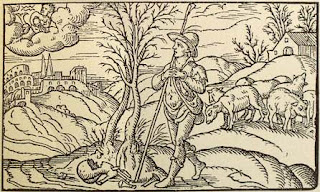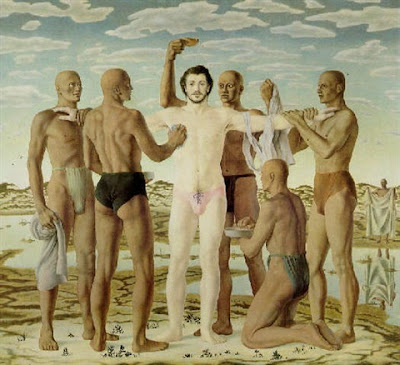Marechera's Love Sonnets. (2)
 Heine’s Walpurgisnacht is very much a night of the Romantic imagination. (It is neither a Satanic image nor a Pagan image). Love is connected to darkness and witchcraft, marking sexual emotions as a product of enchantment and women’s sinister power. The Amelia Sonnets are written in this vein, offering an ambiguous image of women and poetry. The sonnet tradition is almost inseparable from that of Amor. The poet’s relationship to the Beloved is cast as poet-muse. Amor creates poetry and Divine Love is enshrined within the Beloved. Shakespeare’s sonnets to the "Dark Lady" are an inversion of the tradition as it stretches from Cavalcanti, Dante, Petrarch into the Elizabethan sonneteers. In an introduction to the eight Amelia Sonnets, Marechera dwells on the link between love and mortality. This suggests an Orphic pattern to his sequence. Amelia is dead. So, he approaches her as Orpheus to Euridice. His own “Dark Lady” is a woman of power, one who has the power to make him surrender his self. Marechera refers to Sylvia Plath in the introduction, in fact, he actually quotes her. “To love is to die. And as Sylvia Plath said, dying is an art.” The reference is, of course to her 1965 poem, “Lady Lazarus”:
Heine’s Walpurgisnacht is very much a night of the Romantic imagination. (It is neither a Satanic image nor a Pagan image). Love is connected to darkness and witchcraft, marking sexual emotions as a product of enchantment and women’s sinister power. The Amelia Sonnets are written in this vein, offering an ambiguous image of women and poetry. The sonnet tradition is almost inseparable from that of Amor. The poet’s relationship to the Beloved is cast as poet-muse. Amor creates poetry and Divine Love is enshrined within the Beloved. Shakespeare’s sonnets to the "Dark Lady" are an inversion of the tradition as it stretches from Cavalcanti, Dante, Petrarch into the Elizabethan sonneteers. In an introduction to the eight Amelia Sonnets, Marechera dwells on the link between love and mortality. This suggests an Orphic pattern to his sequence. Amelia is dead. So, he approaches her as Orpheus to Euridice. His own “Dark Lady” is a woman of power, one who has the power to make him surrender his self. Marechera refers to Sylvia Plath in the introduction, in fact, he actually quotes her. “To love is to die. And as Sylvia Plath said, dying is an art.” The reference is, of course to her 1965 poem, “Lady Lazarus”:Dying,
Is an art, like everything else.
I do it exceptionally well.
(Ariel, p.9).
Marechera’s Beloved differs from the traditional in some significant ways. He imagines her as a woman from the moon’s dark side, not just a virginal, crescent Artemis. Like Plath, she is a woman bound to death, a muse/projection uniting Thanatos and Eros. She is a muse that has been entered, sexually and psychically, not a woman worshipped from a distance, an untouchable Beloved.



Comments